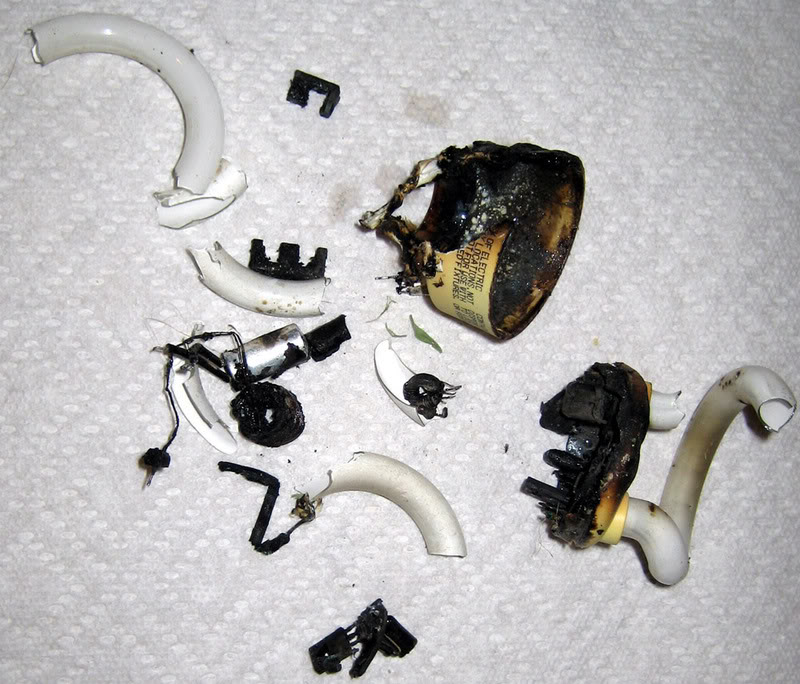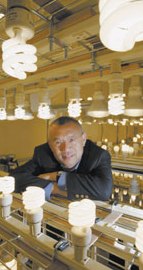CFL Light Bulbs Pose Fire Risk
With the ever growing steps in energy conservation, many consumers find great savings in using Compact Fluorescent Light Bulbs known as CFL’s. The light bulbs create tremendous energy savings and produce less heat than their incandescent predecessors. However consumers must beware of the cautions associated with use of these lamps.
 CFL’s are designed to replace incandescent lamps in most portable and non-portable fixtures, such as table lamps and wall mounted fixtures. The limitation of using these CFL bulbs is their use in outdoor applications and enclosed fixtures. CFL’s such as spiral lamps are permissible in enclosed fixtures, providing that they are specially designed for that application and limited to 42 Watts or less. CFL lamps greater than 42 watts are designed for use only indoors with open rated fixtures. Many manufacturers of these higher wattage CFL’s, such as TCP, Maxlite, and Sunlight Brands expressly denote that these high wattage CFL Lamps are not for use outdoors or enclosed fixtures due to risk of fire.
CFL’s are designed to replace incandescent lamps in most portable and non-portable fixtures, such as table lamps and wall mounted fixtures. The limitation of using these CFL bulbs is their use in outdoor applications and enclosed fixtures. CFL’s such as spiral lamps are permissible in enclosed fixtures, providing that they are specially designed for that application and limited to 42 Watts or less. CFL lamps greater than 42 watts are designed for use only indoors with open rated fixtures. Many manufacturers of these higher wattage CFL’s, such as TCP, Maxlite, and Sunlight Brands expressly denote that these high wattage CFL Lamps are not for use outdoors or enclosed fixtures due to risk of fire.
 According to Ellis Yan, Chief Executive Officer of TCPI the nations largest producer of CFL lamps, “The high wattage CFL’s are designed with an integral cooling fan to reduce the heat levels produced from overheating the electronic components. Using these lamps in enclosed fixtures may pose a serious risk to consumers”. Education is a passion for Ellis that extends into the company’s business philosophy.He has been instrumental in establishing consumer and school education programs to share the energy efficient and environmental benefits of using compact fluorescent lamps (CFLs). He is also dedicated to health and wellness and has developed incentive programs encouraging employees to make decisions that are good for their health and the environment.
According to Ellis Yan, Chief Executive Officer of TCPI the nations largest producer of CFL lamps, “The high wattage CFL’s are designed with an integral cooling fan to reduce the heat levels produced from overheating the electronic components. Using these lamps in enclosed fixtures may pose a serious risk to consumers”. Education is a passion for Ellis that extends into the company’s business philosophy.He has been instrumental in establishing consumer and school education programs to share the energy efficient and environmental benefits of using compact fluorescent lamps (CFLs). He is also dedicated to health and wellness and has developed incentive programs encouraging employees to make decisions that are good for their health and the environment.
In 2008, the Office of National statistics reports there were 1033 fires caused from misuse of CFL light bulbs. Energy Star, a joint effort between the Department of Energy and the Environmental Protection Agency, CFLs installed in enclosed fixtures designed for incandescent bulbs may overheat. This can pose serious risk of injury or fire, and significantly reduce both light output and lifetime. Even under optimum conditions, light output from a CFL will decrease over its lifetime. To maintain existing light levels, select CFLs with rated lumen output (of bulb and ballast together) at least as high as the bulbs they replace. CFLs should have a power factor (PF) above 50% and a Color Rendering Index (CRI) above 80%. ENERGY STAR-qualified integral CFLs and most available modular CFLs meet these criteria.
Particularly for high-use fixtures, consider replacing an existing screw-based (“incandescent”) fixture with one designed exclusively for CFL use—i.e., a fixture with a hard-wired ballast that accommodates pin-based CFLs. (Residential CFL fixtures are also covered by an ENERGY STAR labeling program.
For More Information
- DOE’s Energy Efficiency and Renewable Energy (EERE) Information Center
Phone: 1-877-EERE-INF or 1-877-337-3463 - The EPA/DOE ENERGY STAR®program provides product listings of complying CFLs and dedicated CFL fixtures.
Phone: (800) 372-7827 - The Lighting Research Center’s Web sitehas valuable information covering CFLs and other lighting systems.
Phone: (518) 276-8716 - Lawrence Berkeley National Laboratory provided supporting analysis for this recommendation.
Phone: (202) 646-7954


Currently there are no comments related to this article. You have a special honor to be the first commenter. Thanks!
You must be logged in to post the comment!